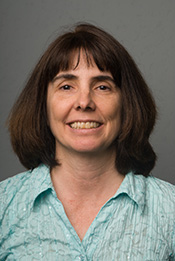Program Information
A Radiobiological Model of Reoxygenation and Fractionation Effects
M Guerrero1*, DJ Carlson2 , (1) University of Maryland School of Medicine, Baltimore, MD, (2) Yale Univ. School of Medicine, New Haven, CT
Presentations
SU-E-T-70 (Sunday, July 12, 2015) 3:00 PM - 6:00 PM Room: Exhibit Hall
Purpose: To develop a simple reoxygenation model that fulfills the following goals:
1- Quantify the reoxygenation effect in biologically effective dose (BED) and compare it to the repopulation effect.
2- Model the hypoxic fraction in tumors as a function of the number of fractions.
3- Develop a simple analytical expression for a reoxygenation term in BED calculations.
Methods: The model considers tumor cells in two compartments: one normoxic population of cells and one hypoxic compartment including cells under a range of reduced oxygen concentrations. The surviving fraction is predicted using the linear-quadratic (LQ) model. A hypoxia reduction factor (HRF) is used to quantify reductions in radiosensitivity parameters α_A and β_A as cellular oxygen concentration decreases. The HRF is defined as the ratio of the dose at a specific level of hypoxia to the dose under fully aerobic conditions to achieve equal cell killing. The model assumes that a fraction of the hypoxic cells (Δ) moves from the hypoxic to the aerobic compartment after each daily fraction. As an example, we consider standard fractionation for NSCLC (d=2Gy,n=33) versus a SBRT (n=5, d=10Gy) fractionation and compare the loss in reoxygenation biological effect with the gain in repopulation biological effect.
Results: An analytic expression for the surviving fraction after n daily treatments is derived and the reoxygenation term in the biological effect is calculated. Reoxygenation and repopulation effects are the same order of magnitude for potential doubling time Td values of 2 to 5 days. The hypoxic fraction increases or decreases with n depending on the reoxygenation rate Δ. For certain combinations of parameters, the biological effect of reoxygenation goes as -(n-1)*ln(1-Δ) providing a simple expression that can be introduced in BED calculations.
Conclusion: A novel radiobiological model was developed that can be used to evaluate the effect of reoxygenation in fractionated radiotherapy.
Contact Email:


